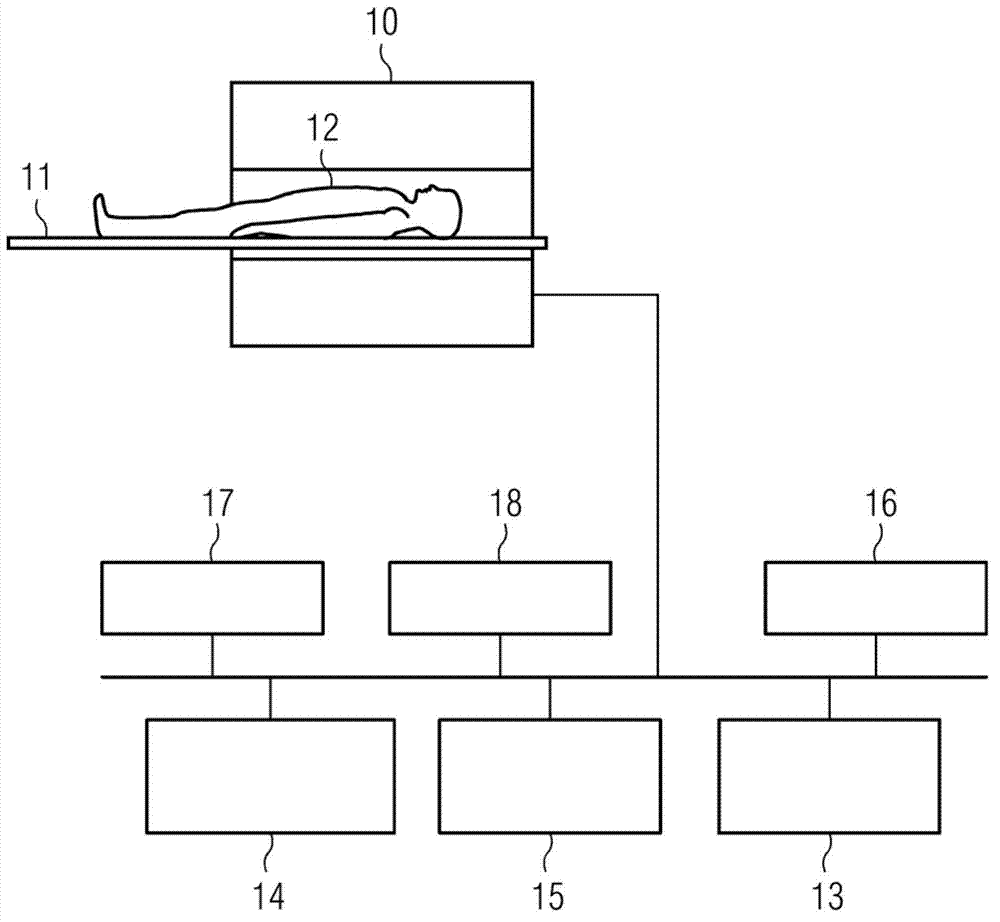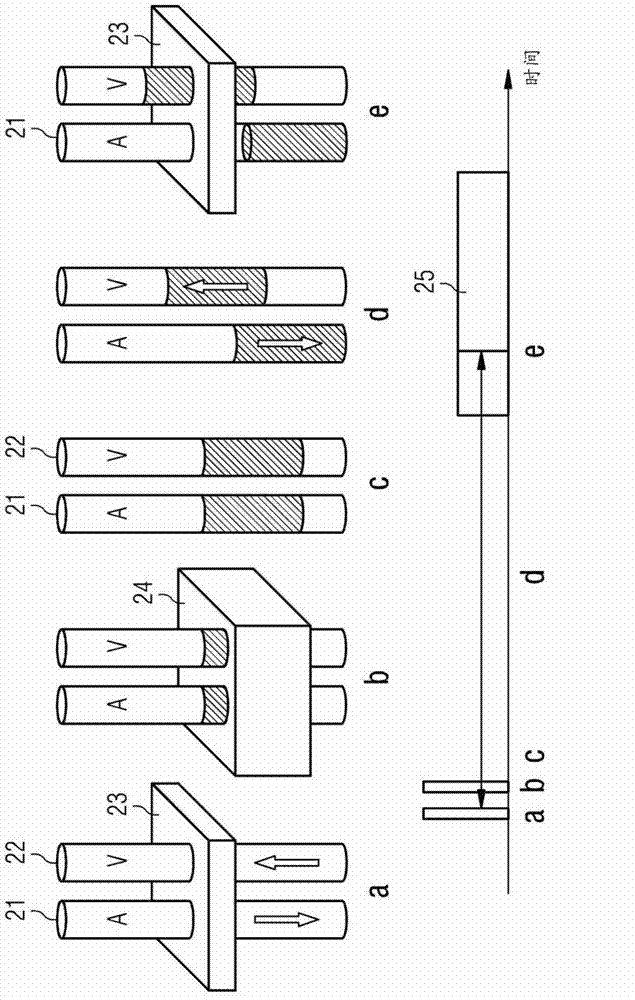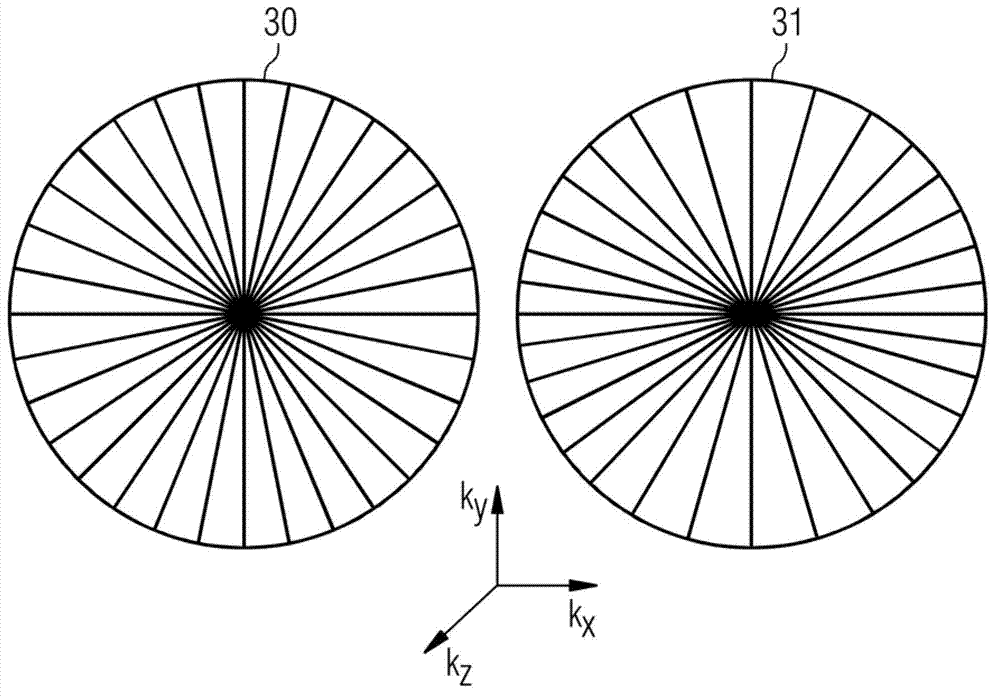MR-angiography with non-cartesian signal acquisition
An angiography, non-Cartesian technique, applied to the measurement of magnetic variables, medical science, measurement devices, etc., can solve the problem of inability to obtain efficiency
- Summary
- Abstract
- Description
- Claims
- Application Information
AI Technical Summary
Problems solved by technology
Method used
Image
Examples
Embodiment Construction
[0034] exist figure 1 , schematically shows an MR system with which MR angiography images with good spatial resolution can be generated in all three spatial directions within an acceptable measurement time. The MR system has a magnet 10 for generating a polarization field B0. A person to be examined 12 arranged on a couch 11 is moved into the magnet 10 , wherein the magnetization generated in the person being examined can be reversed out of the equilibrium position by radiating high-frequency pulses. The relaxation processes that occur after the incident radio-frequency pulse can be detected with coils not shown. For the spatial encoding of the detected signals, magnetic field gradients are also applied via gradient coils (not shown) in order to achieve a spatial dependence of the detected signals. The general method of how MR images can be generated by the sequence of radiating high-frequency pulse sequences and switching on magnetic field gradients is known to those skille...
PUM
 Login to View More
Login to View More Abstract
Description
Claims
Application Information
 Login to View More
Login to View More - R&D
- Intellectual Property
- Life Sciences
- Materials
- Tech Scout
- Unparalleled Data Quality
- Higher Quality Content
- 60% Fewer Hallucinations
Browse by: Latest US Patents, China's latest patents, Technical Efficacy Thesaurus, Application Domain, Technology Topic, Popular Technical Reports.
© 2025 PatSnap. All rights reserved.Legal|Privacy policy|Modern Slavery Act Transparency Statement|Sitemap|About US| Contact US: help@patsnap.com



